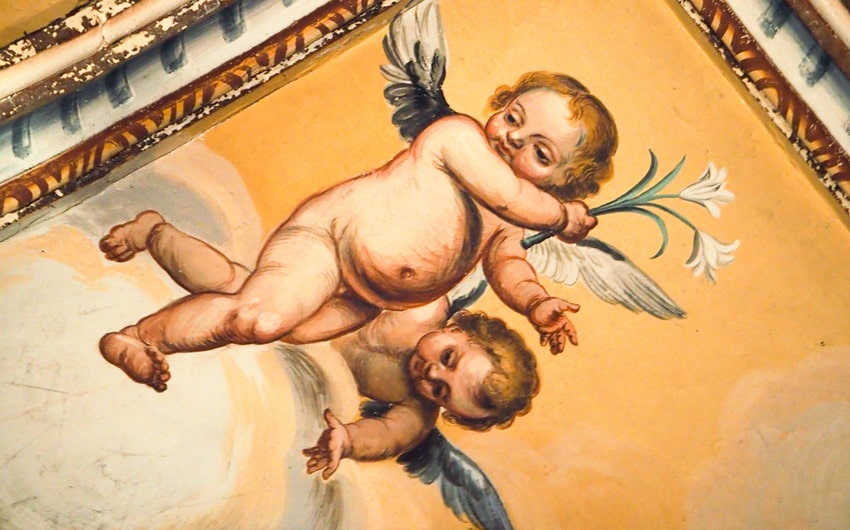Famous Angel Paintings: A Journey Through Time
Angels have long been a source of inspiration in art, symbolizing purity, divinity, and guidance. Throughout history, artists from different eras have rendered their own interpretations of these celestial beings, using their cultural contexts and unique artistic styles to breathe life into angelic imagery. This article takes you on a journey through time, exploring famous Angels artworks that have left an indelible mark on the world of art.
1. Giotto’s “The Last Judgment” (1305)
We begin our journey in the 14th century with Giotto di Bondone, a pivotal figure in the Italian Renaissance. In his fresco “The Last Judgment”, painted in 1305 as part of the Scrovegni Chapel in Padua, Giotto depicted a multitude of angels, some of whom are seen assisting Christ in separating the saved from the damned.
His use of emotion in the faces of the angels was groundbreaking for the time and paved the way for more humanized portrayals of these divine figures. Giotto’s work marks a shift from the more abstract, stiff depictions of angels in Byzantine art to more naturalistic forms that would dominate the Renaissance.
2. Fra Angelico’s “The Annunciation” (1438–1447)
Next, we move forward to the early Renaissance, where Fra Angelico, a Dominican friar and artist, painted one of the most famous angel scenes in Christian art. “The Annunciation” is a serene depiction of the Angel Gabriel visiting the Virgin Mary to announce that she would bear the Son of God. Painted between 1438 and 1447, this work is celebrated for its use of light and color, as well as the tender grace with which Gabriel is portrayed. Fra Angelico’s angels are ethereal, bathed in soft light, symbolizing purity and divine intervention.
3. Leonardo da Vinci’s “Annunciation” (1472–1475)
The High Renaissance saw another iconic depiction of the Annunciation, this time by Leonardo da Vinci. Painted between 1472 and 1475, Leonardo’s “Annunciation” features the angel Gabriel kneeling before the Virgin Mary, his wings meticulously detailed to resemble bird feathers—a hallmark of Leonardo’s keen observation of nature.
Gabriel’s soft expression and delicate posture give him a human-like quality, making this painting a perfect blend of the earthly and the divine. This work demonstrates Leonardo’s mastery of chiaroscuro, using light and shadow to bring depth and realism to his angelic figure.
4. Raphael’s “Sistine Madonna” (1512)
One of the most famous angelic images in art history comes from Raphael’s “Sistine Madonna” (1512). In the lower portion of the painting, two cherubic angels rest on their arms, gazing upward with dreamy expressions. These two childlike angels, known as putti, have become some of the most reproduced and iconic angel figures in Western art. The painting as a whole was commissioned for the church of San Sisto in Piacenza, but these putti have taken on a life of their own, representing innocence and wonder.
5. Caravaggio’s “The Seven Works of Mercy” (1607)
Moving into the Baroque period, Caravaggio offers a dramatically different interpretation of angelic figures in his 1607 painting “The Seven Works of Mercy.” Caravaggio’s angel is neither soft nor passive but an active participant in the narrative.
Suspended in motion, this angel is depicted in the act of mercy, symbolizing the divine presence in acts of charity. Caravaggio’s use of stark contrasts between light and dark, known as tenebrism, enhances the dynamic movement of the angel, making it a powerful figure of divine intervention in the human world.
6. Guido Reni’s “Saint Michael” (1636)
Another standout angel painting from the Baroque era is Guido Reni’s “Saint Michael” (1636), a striking depiction of the archangel Michael defeating Satan. This iconic image portrays Michael as a powerful, heroic figure, dressed in armor, with his sword raised to strike the devil below. Reni’s elegant use of color and light brings a sense of divine justice and triumph. The archangel’s calm expression in the face of battle represents the unwavering righteousness of God’s judgment.
7. William Blake’s “The Angels Hovering Over the Body of Christ in the Sepulchre” (1805)
The Romantic period brought a more mystical approach to angelic depictions. William Blake, both a poet and painter, often infused his work with spiritual and symbolic elements. His painting “The Angels Hovering Over the Body of Christ in the Sepulchre” (1805) shows ethereal angels floating over the body of Christ, their translucent forms glowing with otherworldly light.
Blake’s angels represent a deep personal spirituality, offering a visionary interpretation of the divine. His unique, almost abstract style stands apart from more traditional representations of angels.
8. Sir Edward Burne-Jones’ “The Golden Stairs” (1880)
A later but significant angelic painting comes from the Pre-Raphaelite artist Sir Edward Burne-Jones. His 1880 work, “The Golden Stairs,” depicts a procession of angels descending a spiral staircase. Each figure is delicate, ethereal, and draped in flowing robes. Unlike the more dramatic depictions of angels in earlier centuries, Burne-Jones presents a calm, serene vision of angelic beauty, focusing on their grace rather than their power. This work is often seen as a representation of the harmony between heaven and earth.
9. Marc Chagall’s “The Falling Angel” (1923–1947)
Finally, we end our journey with a 20th-century interpretation by Marc Chagall, whose work blends the spiritual with the surreal. In his painting “The Falling Angel”, created between 1923 and 1947, Chagall presents an angel tumbling through a chaotic sky, symbolizing the turmoil of the world.
This haunting image reflects the suffering and dislocation of the Jewish people during the tumultuous years of the Holocaust and World War II. Chagall’s angels are not merely messengers of God but bearers of human suffering, offering a unique, modern take on angelic imagery.
Conclusion
From the early depictions of angels as divine messengers in Giotto’s work to the modern, emotionally charged figures of Marc Chagall, the portrayal of angels in art has evolved dramatically over time. These Angels artworks not only reflect the changing styles of their respective periods but also offer insight into the spiritual and cultural beliefs that shaped them. Each artist’s vision adds a new layer of meaning to the timeless symbol of angels, making them a perpetual source of inspiration in art history.







